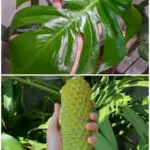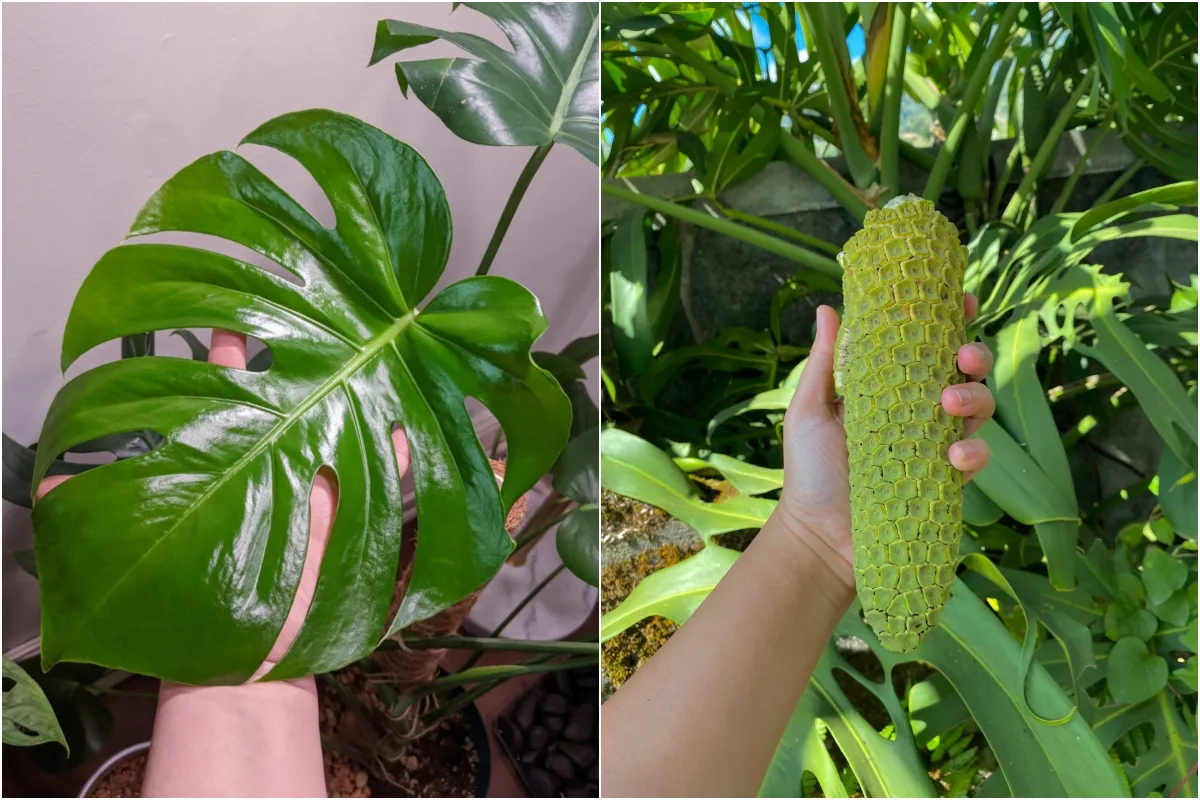
If you fall head first into houseplant obsession, it’s likely you will eventually bring home a Monstera deliciosa.
Getting your deliciosa is a bit like getting your first bike without training wheels. While these plants aren’t difficult to care for, their size often intimidates new plant hobbyists, so it’s kind of a big deal when you decide you’re ready to own one of these lush, tropical beauties.
Whether you’re excited about this new addition to your houseplant family or you’ve owned one for ages, there are a few things everyone with a Monstera deliciosa needs to know.
Their lives as houseplants are quite different from how these plants grow and thrive in the wild. But learning about their native habitats and how they grow in them can give us clues that will allow us to keep our Monsteras healthy and flourishing for decades.
Monstera deliciosa – a quick overview
Monstera deliciosa is an incredibly popular houseplant from the arum family. While not a true philodendron, they are related. They are native to southern Mexico, down to Panama and have naturalized in many tropical areas in Central America.
As a hemiepiphyte, they can grow up to twenty meters high in the wild, climbing up trees. Yet, they rarely grow past three meters when kept as a houseplant.
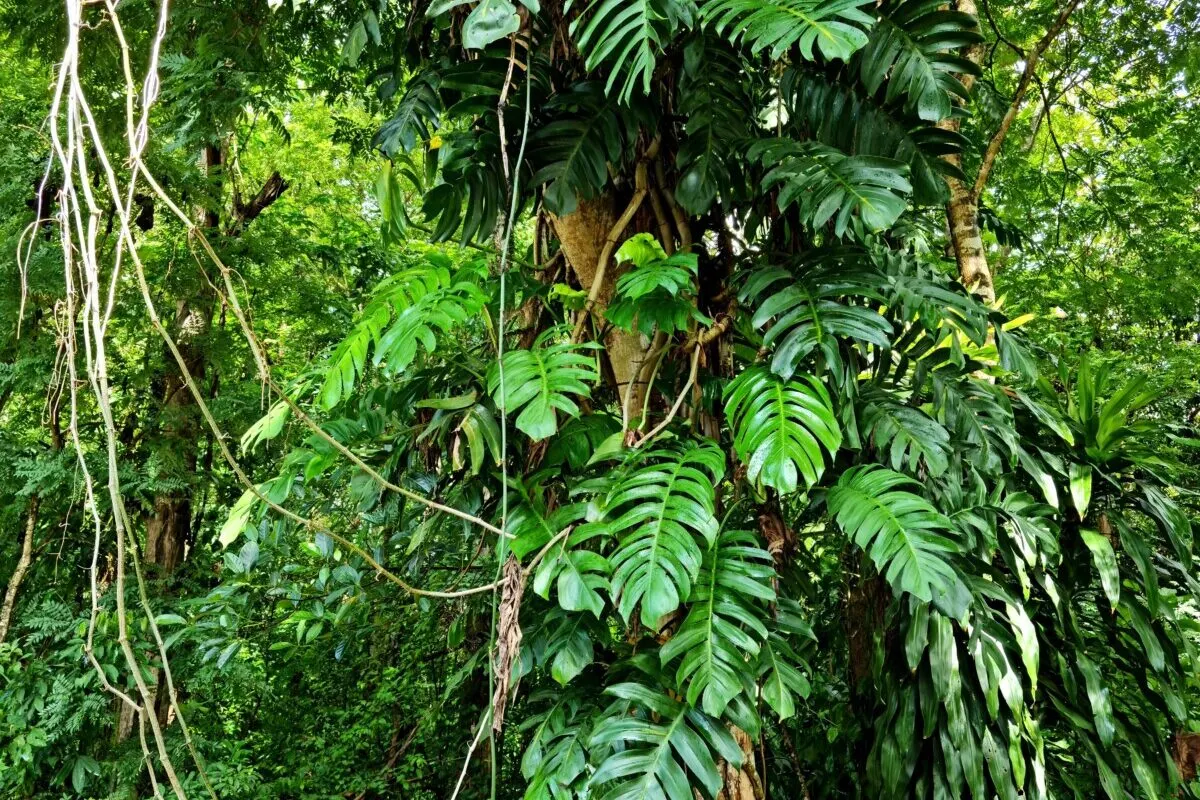
Monstera deliciosa, or the Swiss cheese plant, thrives when provided with bright, indirect light. Water moderately when the top inch or two of soil dries out. Maintain higher humidity levels around the plant to mimic its rainforest habitat. Regular fertilization with a balanced, water-soluble fertilizer during the spring and summer will encourage new growth. Pruning helps manage its size and shape, and providing a support structure will encourage your Monstera to grow upright.
With the basics out of the way, let’s dive into some tips and interesting facts about these gorgeous plants.
1. The Word of the Day is Fenestration
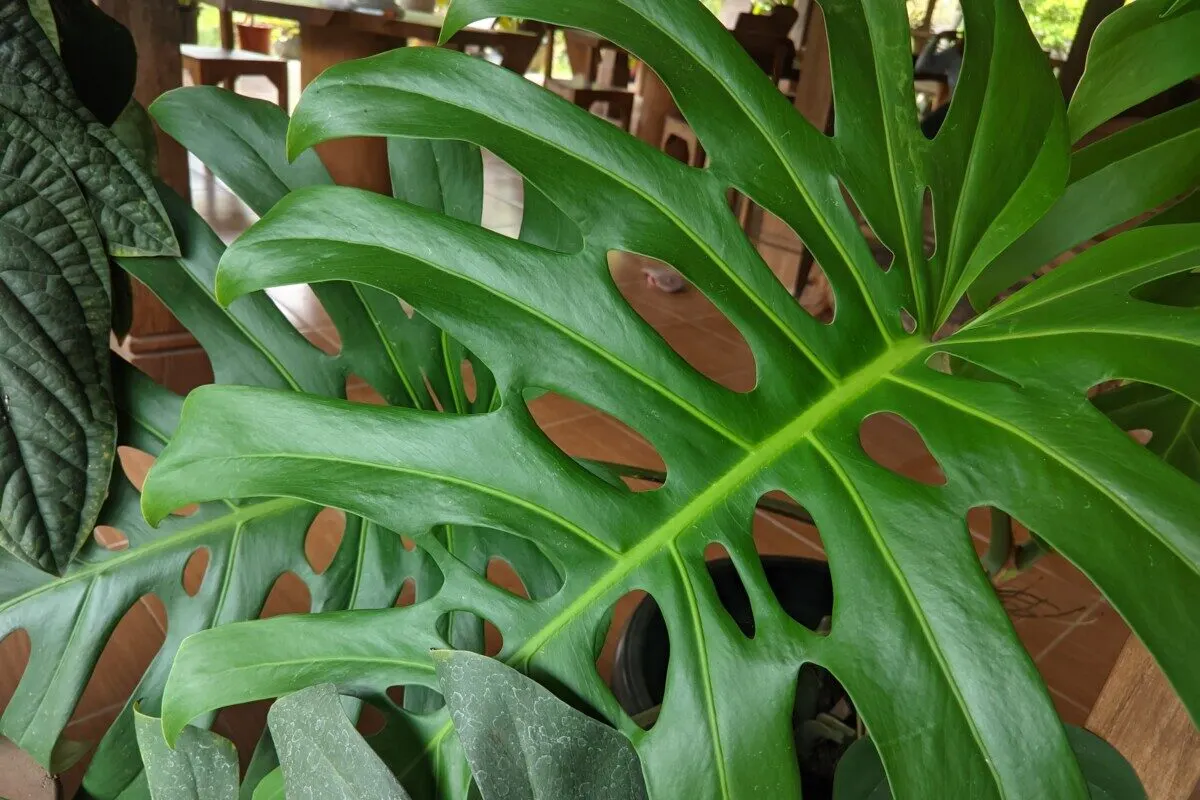
By far, the most interesting and attractive feature of the Monstera deliciosa is the holes in its leaves. Known as fenestrations, these natural perforations serve a purpose in their native habitat.
The Monstera grows in tropical forests where heavy rainfall and, at times, high winds are the norm. These naturally occurring holes in the leaves allow rainwater to pass through the leaf that would otherwise collect and damage the stem from the weight of the water. They also allow the plant to move and bend with the wind from a storm, preventing damage to the leaves.
If your new Monstera leaves are disappointingly whole, have patience.
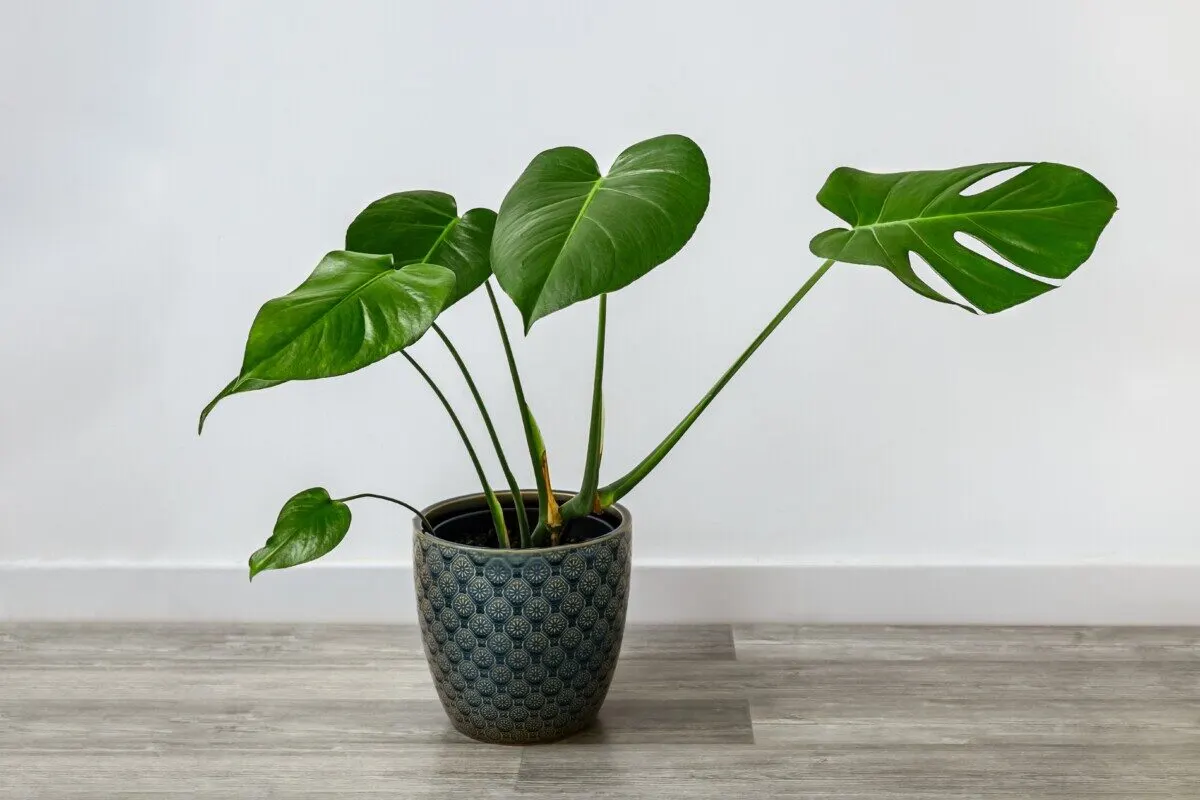
Monstera deliciosa leaves do not start out with fenestrations. Young leaves typically emerge as small, entirely heart-shaped, with no holes. As the plant matures, the characteristic fenestrations begin to appear, and the leaves become more divided and intricate.
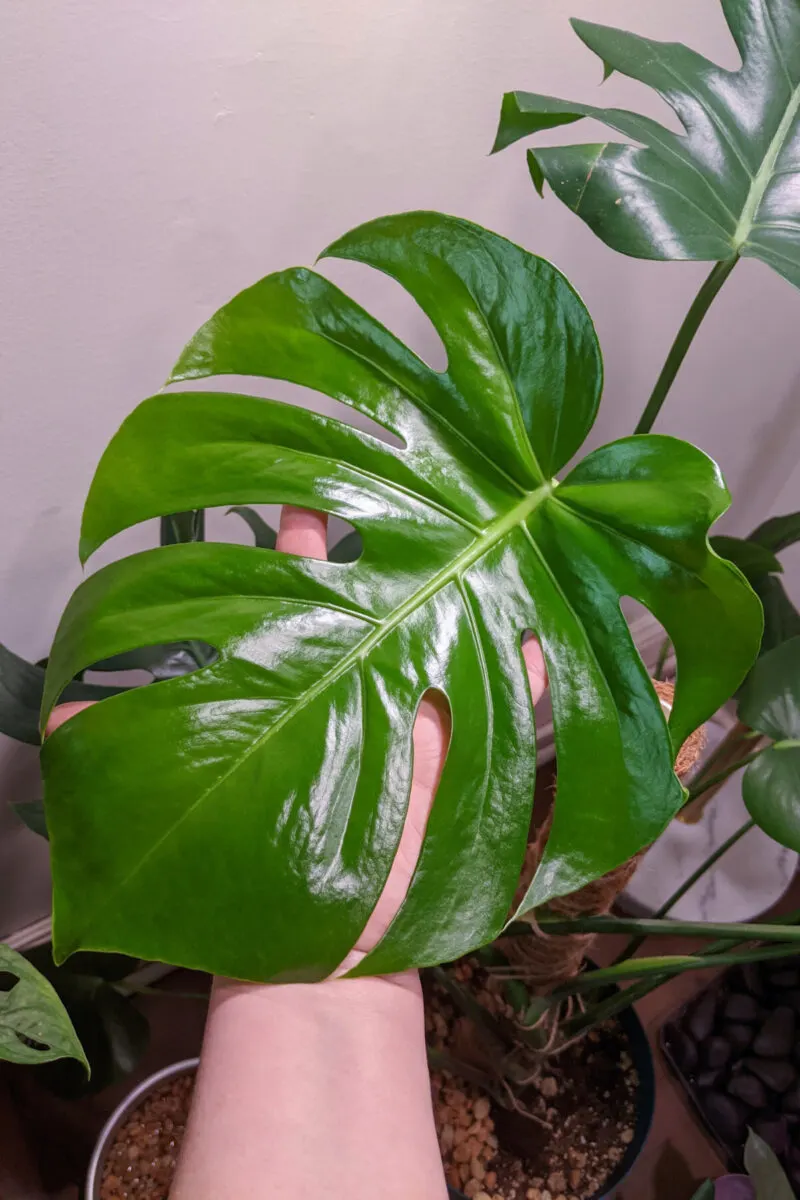
It can take several years for a healthy monstera to grow leaves with holes in them.
If you want that fully-fledged tropical Monstera leaf you see in all the pictures, you’ll want to purchase an older, larger specimen. If you don’t mind waiting, a cutting from a friend is the way to go.
As long as you provide your plant with plenty of bright light and good overall care, its leaves will grow larger over the years and have more fenestrations with each new leaf.
2. Deliciosa or Adansonii?
There are two types of Monstera kept as houseplants. They’re often confused with each other. Monstera deliciosa and Monstera adansonii are two distinct species within the Monstera genus. While they share some similarities, they have several key differences.
As we’ve discussed, Monstera deliciosa, often referred to as the Swiss cheese plant, is known for its large leaves with distinct fenestrations. These leaves can grow quite large in the wild, as big as a car tire, making it a popular choice among houseplant lovers.
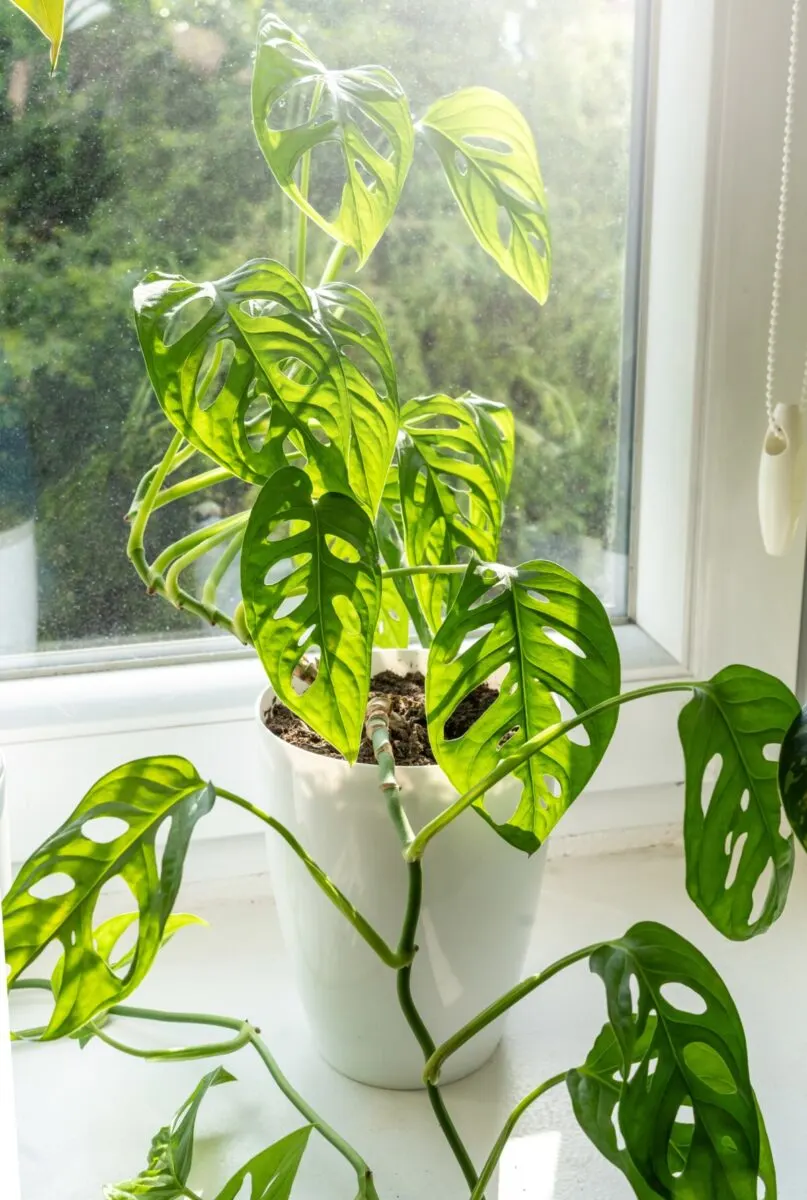
On the other hand, Monstera adansonii, commonly known as the Swiss cheese vine, features smaller, more delicate leaves with smaller fenestrations. The leaves of Monstera adansonii are usually heart or spear-shaped and have a vining, trailing growth habit. (They’re perfect for that DIY macrame plant holder you made.)
Additionally, Monstera adansonii tends to be more compact and stays smaller compared to the larger and more upright growth habit of Monstera deliciosa.
While both plants belong to the same family and share a similar “Swiss cheese” leaf pattern, these differences in leaf size, growth habit, and overall size make them easily distinguishable once you know what to look for.
3. Delicious Monster
Monstera deliciosa’s Latin name refers to its massive leaves and the delicious fruit it yields when grown in the wild. Don’t get too excited; it’s nearly impossible to grow a monstera that produces fruit as a houseplant.
The Latin “monstrum,” which means “monster” or “monstrous,” refers to the plant’s unusually large leaves as well as their appearance – leathery and filled with holes.
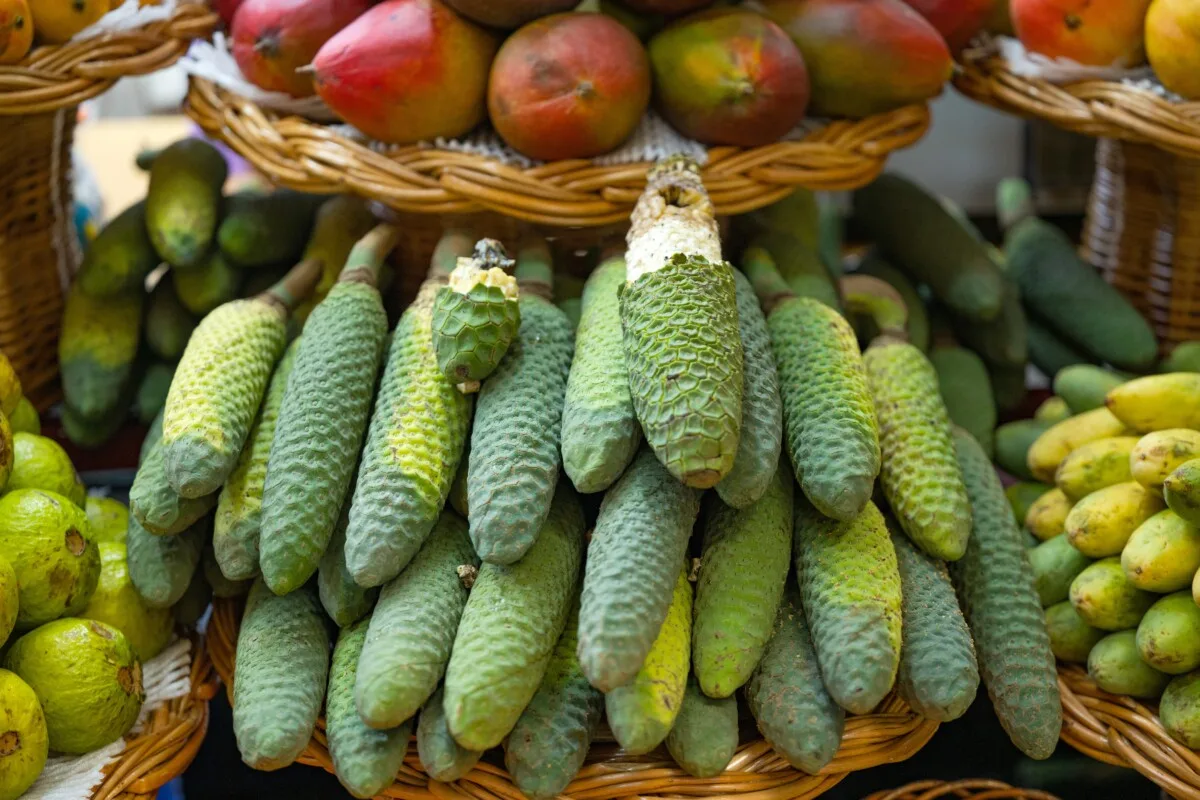
Deliciosa is pretty easy to figure out; in Latin, “deliciosus” means “pleasing to the taste” or, you guessed it, “delicious.” Mature Monsteras will produce flower stalks with a fruit in the center that looks almost like a large green pinecone. The fruits, considered a delicacy, taste a bit like a blend of pineapple, banana and a touch of citrus.
4. Aerials – to Trim or Not to Trim
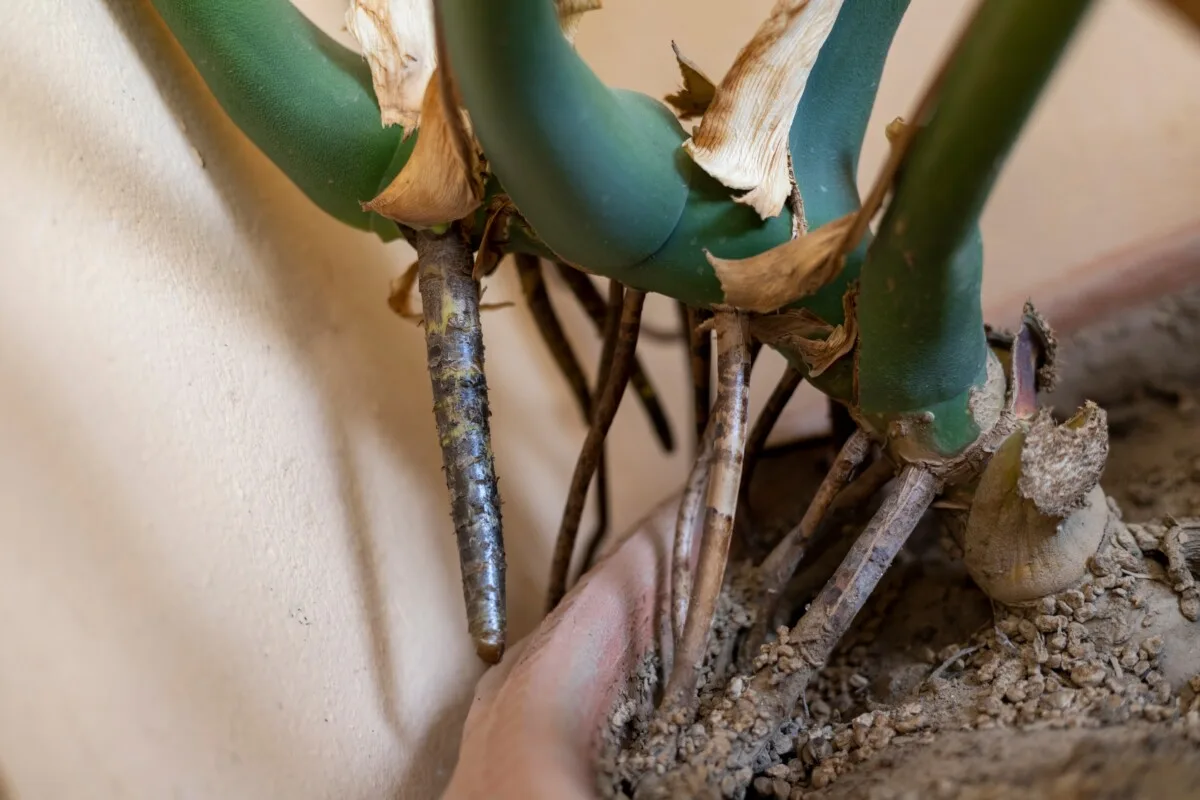
As your Monstera deliciosa grows, it will begin to produce aerial roots. These start as rough brown nubs at the ends of leave nodes. In the wild, these roots will continue to grow downward until they reach the tree or the soil, where they will help to anchor the plant to the tree it’s climbing.
If you have a healthy Monstera plant that’s several years old, you may notice the aerial roots are getting quite long and depending on where your plant is in your home, they may get in the way. Trimming Monstera aerial roots is generally unnecessary and often discouraged unless there is a specific reason to do so (disease or injury to the root).
The aerial roots absorb moisture from the air, which is especially important for a houseplant.
Needless to say, despite our best efforts, our homes are not as humid as a tropical forest. Cutting the aerial roots reduces the plant’s ability to take in moisture.
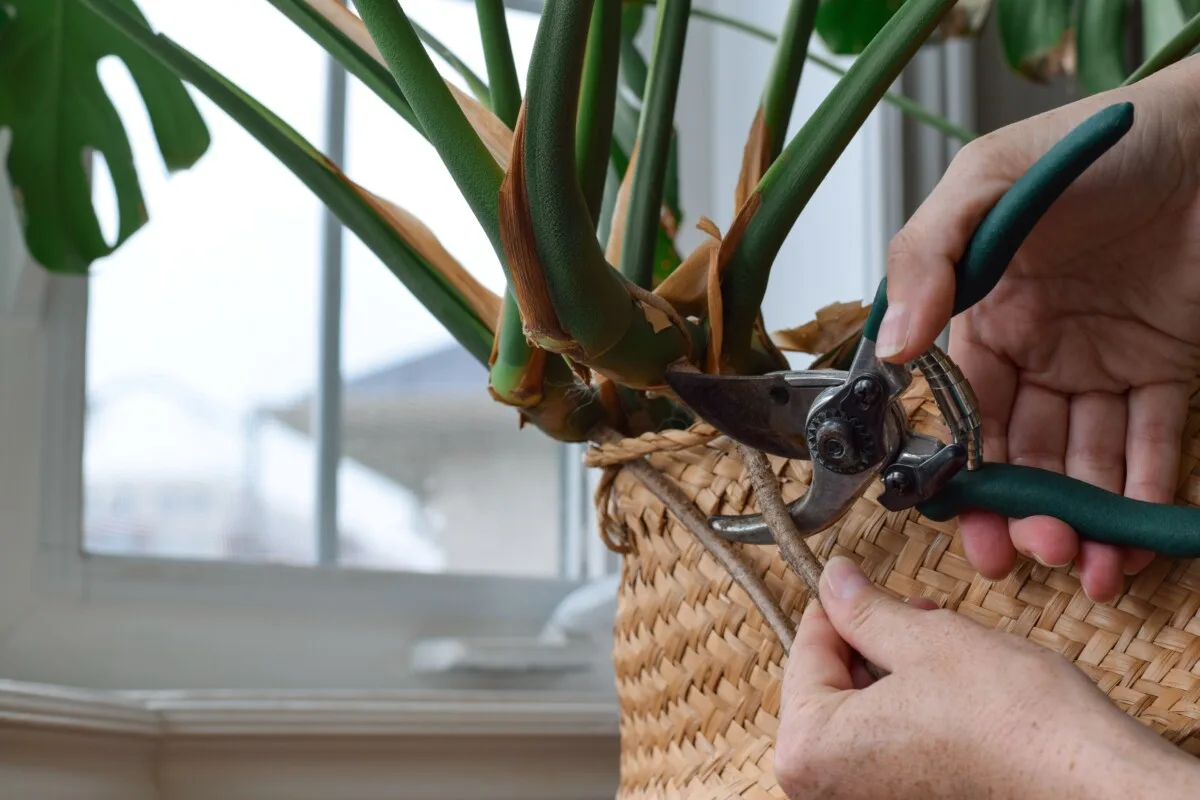
If you don’t like how the roots look, or they’re becoming a tripping hazard, tuck them up into the potting medium or wrap them around the base of your Monstera’s support structure. And remember, all that root growth is a sign that you’re growing a happy and healthy Monstera.
5. Support Your Local Monstera
Because Monstera are climbing plants, young plants will quickly need support to grow up. The most popular method of supporting and training a Monstera to grow upright is with a coconut coir pole.
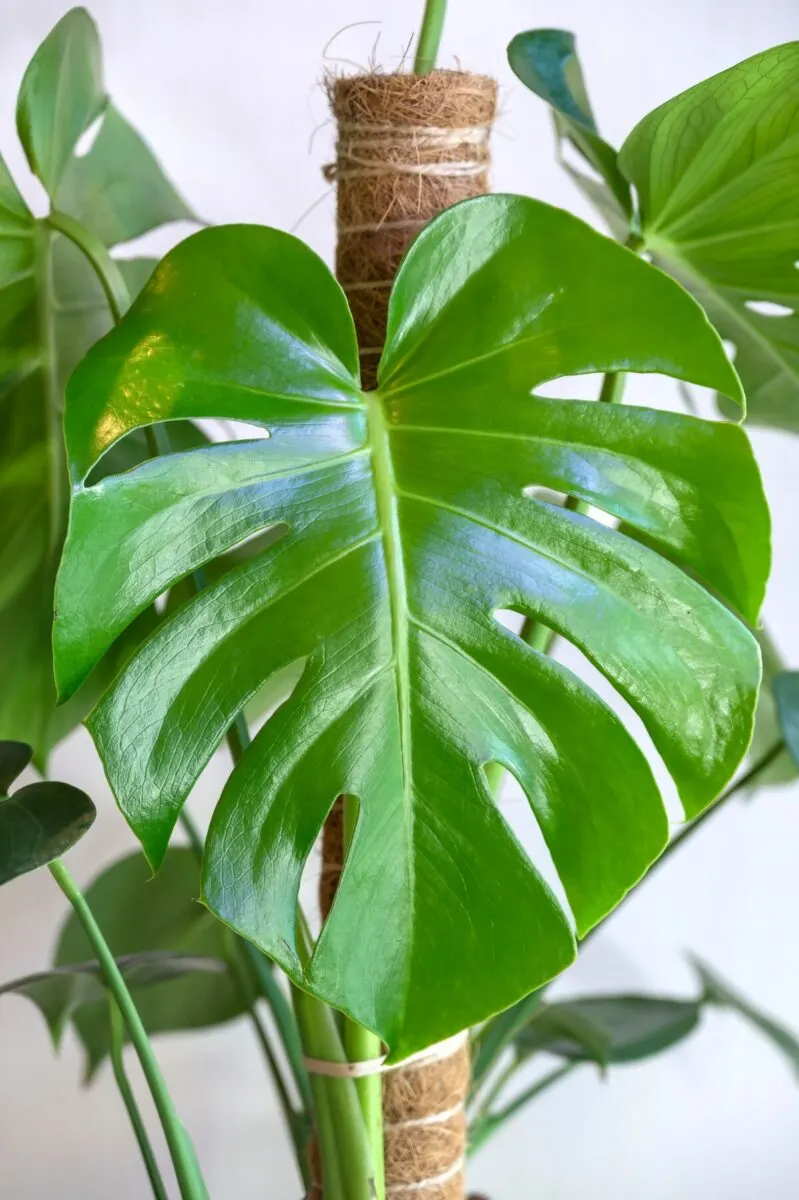
However, if you’re in it for the long haul and intend to keep your plant going til death do you part, it’s best to opt for something more substantial. Take the time to find the spot in your home where your Monstera deliciosa is happiest. This could take some moving around and repositioning over several months, but remember, we’re in this for the long haul.
Once you’ve found the best spot, lean a piece of rough-cut lumber against the wall for the plant to climb. You may even want to consider repotting your Monstera and setting the timber in the planter before adding soil and moving your plant over to it. It will still need to lean against the wall to support the weight of the lumber.
Tie sturdy twine around the entire length of wood or wrap it in rough burlap to give your plant something to cling to and climb. Remember, Monstera climb large trees in nature, not skinny poles. Give your Monstera a wide surface to grow upright and attach itself to, and then watch it go.
Take a look at my DIY tutorial for making a heavy monstera planter with climbing pole that will never topple over.
6. The Monstera Unicorn Has Stripes
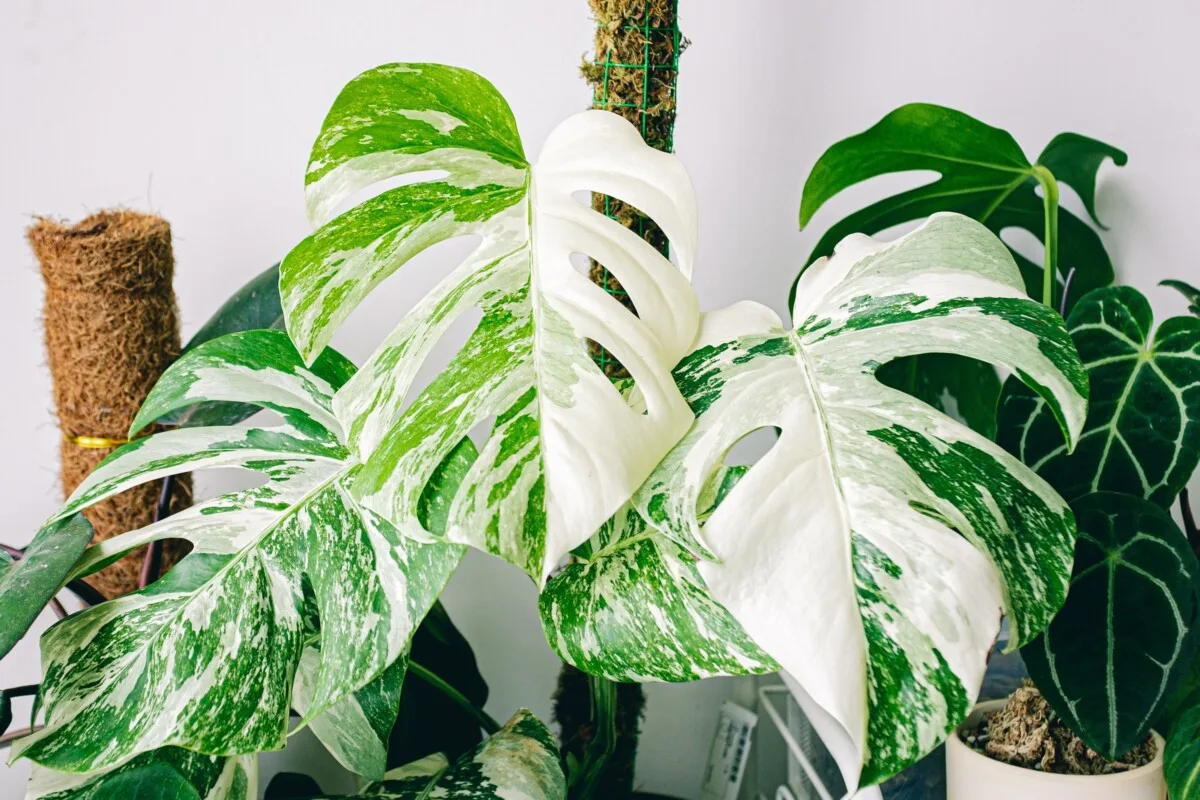
The popularity of variegated Monstera has surged in recent years, driven by social media and plant trends. Increased demand and limited availability make them one of the most expensive houseplants you can buy.
But why are they so expensive and hard to come by?
True variegated Monstera deliciosa plants are relatively rare in nature. Variegation occurs due to a genetic mutation that causes some portions of the leaves to lack chlorophyll, resulting in white or pale yellow patches. These mutations are uncommon, and finding a naturally variegated Monstera in the wild is rare.
While it is possible to propagate variegated Monstera plants, it can be challenging to maintain the variegation in the offspring. Variegation is often unstable, and new growth may revert to solid green. Nurseries and growers often invest significant time and effort into selecting and propagating stable variegated specimens.
And variegated Monstera plants tend to grow more slowly than their non-variegated counterparts. Add in the fact that most variegated varieties are protected by plant patents, and you have one insanely expensive plant.
7. Repotting Monstera
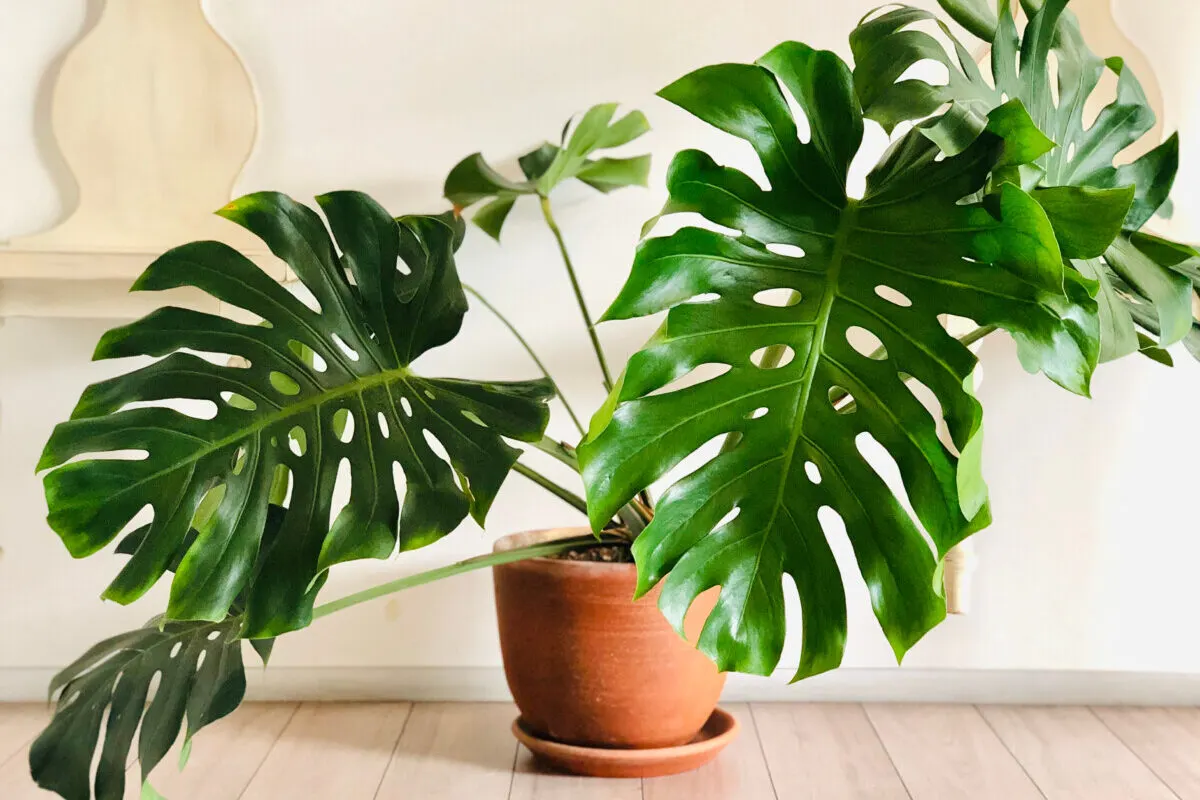
Monstera deliciosa doesn’t have any special repotting requirements. They need to be repotted like most plants, when they become root-bound or the potting soil is depleted of nutrients. You should always choose a pot slightly larger than the current one, remembering to account for the extra room needed for whatever support you are growing the Monstera up.
However, there is a secret to repotting Monstera that will help you to grow a large and sturdy plant.
Skip the plastic planter and opt for a heavy clay pot (or try my DIY heavy monstera planter). This is especially important for older plants that have significant growth.
As the plants grow upward, they get quite top-heavy. Putting them in a flimsy plastic pot almost ensures your plant will eventually tip over. Prevent a huge mess, snapped stems and a lot of tears now by repotting your Monstera in a heavy-bottomed clay planter.
If you have trouble lifting or moving the pot due to its weight, place a plant dolly beneath it to make it easier. Here are some more tips and step-by-step photos of when I repotted my large staked monstera deliciosa.

Get the famous Rural Sprout newsletter delivered to your inbox.
Including Sunday ramblings from our editor, Tracey, as well as “What’s Up Wednesday” our roundup of what’s in season and new article updates and alerts.


